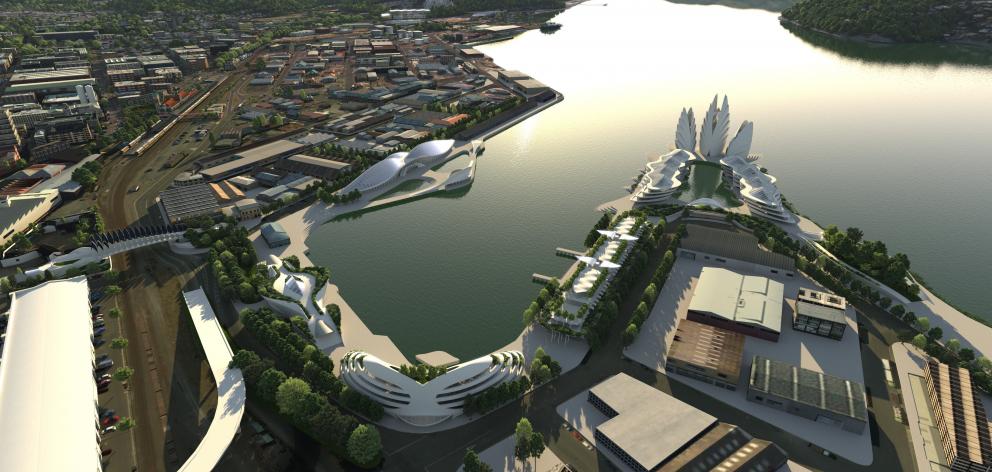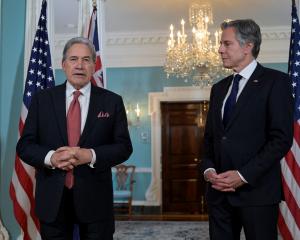
Pros
Dunedin's waterfront vision is a once-in-a-lifetime opportunity to literally pave the way for a long overdue revitalisation of a sadly neglected part of our city, and to do so through both public and private investment and development. The aim is to ensure extensive public access and encourage the transformation of an underutilised part of our city — all at relatively minimal cost to ratepayers. Providing the right climate for job growth and economic development is a key responsibility of the council. While we cannot achieve that on our own, we have an important role to play through things like taking an enabling approach through our planning and consenting functions, investing in new and existing infrastructure, supporting business development initiatives and helping to promote the city to current and potential investors and skilled workers. The waterfront vision project ticks all these boxes.
As we know, the waterfront area has been neglected, much of it near derelict, for far too long. The wharves in the steamer basin area are soon due for replacement due to deterioration of the sea wall and the operational needs of the port company have changed. That shift in the focus of marine and shipping operations provides us with an opportunity that we must grasp. We all know great examples of popular and successful waterfront development, and Wellington is a perfect example with its interesting, attractive and supremely popular waterfront in a climate much less friendly than ours!
The support of the Provincial Growth Fund has paid for the extensive feasibility study, which demonstrates that the projects can be realised, and the bid for further funding has been submitted.
The work proposed will make the land in the area resilient against inevitable sea level rise, and strong and viable for private sector development — things like a marine research centre, a hotel and convention centre, offices, apartments, exhibition spaces and restaurants. Public access is ensured around the whole water edge.
As a necessary catalyst for the waterfront vision, the council has committed $20 million to building an architectural pedestrian/cycle bridge to better connect the centre city with the harbour. The DCC will also probably pick up some additional maintenance costs as a result of development in the area. However, these costs will be insignificant when weighed against the benefits. The costs of some road works may also fall to the ratepayer — for example, realigning Wharf St to create a bigger public space at the head of the basin. A metro-style playground, a smaller version of the Margaret Mahy playground in Christchurch, is also proposed as part of the first stage.
Private-sector investment is expected to run into the hundreds of millions of dollars. The waterfront vision project is also expected to create several hundred new jobs in the education, research, technology, tourism and cultural sectors. Tourist spending in the city is also expected to increase as a result. So, the Dunedin City Council’s role in the waterfront vision project certainly isn’t about "picking up the tab". Rather, it’s about the council acting in its role as a facilitator and enabler of development in our city. It is also important to emphasise that the waterfront vision isn’t happening "at the expense" of other important projects in the city. We’re fully conscious, for example, of the climate change-related challenges facing particularly South Dunedin, and the community’s ever-increasing concern at local housing availability and affordability. Much planning, resource and effort is being directed towards preparing for and responding to these issues. We know too, our new hospital is one of the biggest construction projects ever in this country, and this is part of the momentum that we have in Dunedin just now. Let’s all work to make sure these things are "as well as", not "instead of".
In addition to planning for and responding to challenges, we must also seize the opportunities that present themselves. The waterfront vision is an opportunity that is simply too big and too important to let slip.
- David Benson-Pope is chairman of the DCC planning and environment committee and the Dunedin Heritage Fund
Cons
The Damien Van Brandenburg concept for development of the waterfront is a wonderful dream. However, this dream has seduced the council and some prominent citizens such that they have forgotten reality. It is high time for a reality check.
The reality is that no commercial developer will be prepared to construct a hotel with the "clamshell" sculptural shape and low profile depicted by Van Brandenburg. Commercial developers need to make a profit, and the very high cost of such a design would make this impossible. Commercial developers will need to follow a design like the tall rectangular hotel proposed for near the waterfront and rejected by the council, or the more recent design proposed for the car park above the town hall.
However, perhaps the Dunedin City Council actually plans to build the concept five-star hotel itself, at the ratepayers’ cost? In the ODT (10.11.18), council chief executive Sue Bidrose said "the hotel would be staged, beginning with just one of two planned wings". How can she know this if the hotel is to be built by a private developer? It is clear that it is not just the proposed clamshell bridge that is an ambush of ratepayers (as Hilary Calvert suggested), but the entire project. For the Van Brandenburg concept to be realised, the city will have to build the clamshell cultural centre and most of the other facilities. The cultural centre will be very expensive to build. Overall, the reality is that the proposed development will be another gigantic expense for Dunedin ratepayers to add to the already massive burden of paying for the stadium.
Furthermore, there is no justification for building the bridge to the waterfront at this stage. It will certainly be a bridge to nowhere until, and if, the waterfront development is at least partly completed. It is nonsense to suggest that the bridge will drive the development. And how can a walking and cycling bridge be justified? If a hotel is built, anyone staying in it will drive there. They won’t walk over the bridge trundling their suitcases behind them, or cycle there with their cases on the crossbar. Families visiting the cultural centre or sustainable futures building will also mostly want to drive there. The citizens of Dunedin voted out Mayor Peter Chin and his clique of councillors after they foisted the stadium on the ratepayers with its massive financial burden. But now we have another glory project being foisted on the ratepayers with no substantive information being provided on what the ratepayers of the city will have to pay for and how much. Earlier this year, a waterfront feasibility application was prepared to seek funds from the Provincial Growth Fund. But when media sought information under the Local Government Official Information and Meetings Act, they found more than one third of the 61-page "Dunedin Waterfront Vision" report was blacked out.
Furthermore, the application apparently lists more facilities that the ratepayers will no doubt be expected to fund, including a ferry terminal to accommodate cruise ships and water taxis, an open air swimming pool, an eco-tourism centre, a marine science and environmental centre (potentially a public aquarium), the five-star hotel and conference centre, as well as restaurants and offices. According to the ODT, the council has received a business case report from consultants, requested by the Ministry of Business, Innovation and Employment. None of the information in this report has been made available to the public. Presumably from the report, Dr Bidrose said in the ODT that "what had been a 30-year vision was now more likely to be a five-to-15-year one". More massive borrowing debt to load on to the ratepayers on top of the stadium debt and all the basic services upgrading that has had to be deferred after the stadium soaked up so many ratepayer funds.
No doubt my views will draw the usual criticism that I am decrying development of our great little city. However, "little" is the key word. The reality is that we are a little city with grandiose ideas. The stadium is a great facility, but building it for the massive cost involved was like a middle-class family buying a Rolls-Royce when they could really only afford a Toyota. The Damien van Brandenburg concept for the waterfront redevelopment would be like the same family buying another Rolls-Royce for the garage.
- David Stewart is a retired consulting engineer and a former Mosgiel Borough Council councillor












